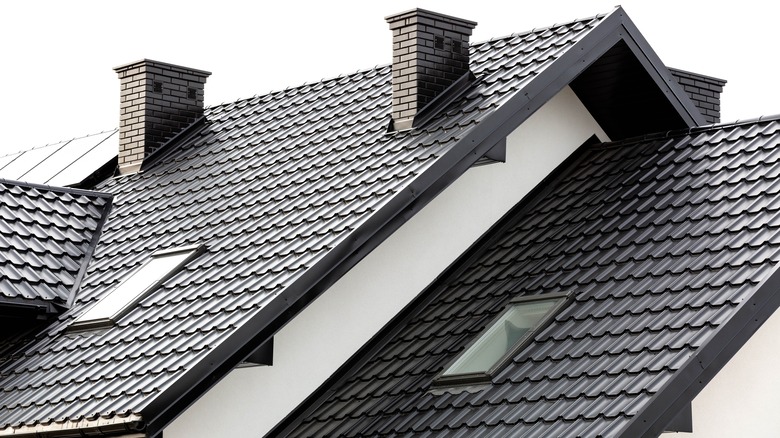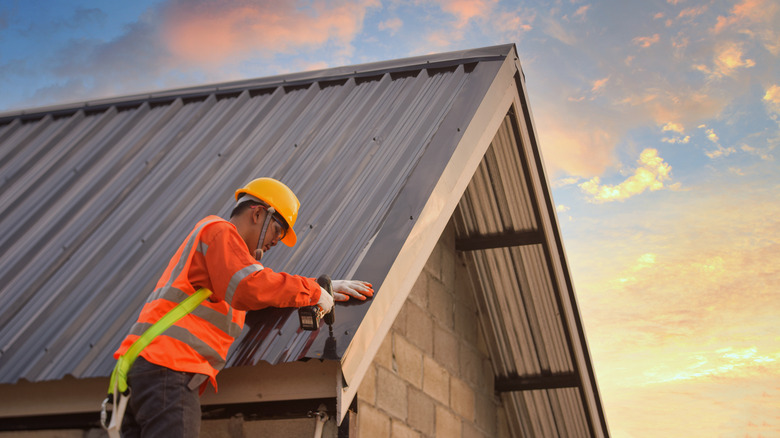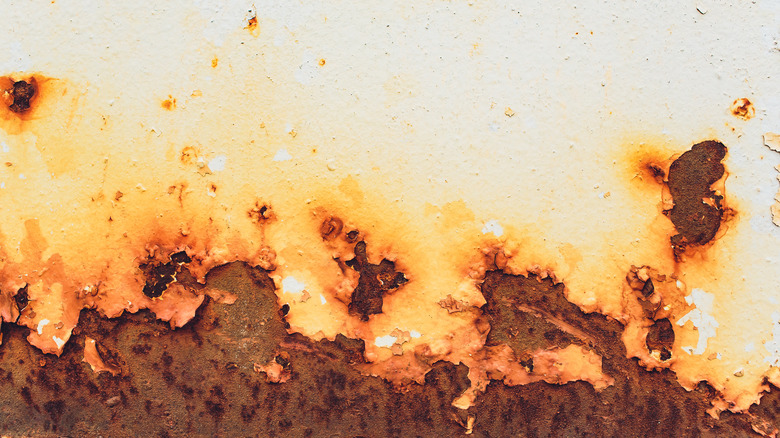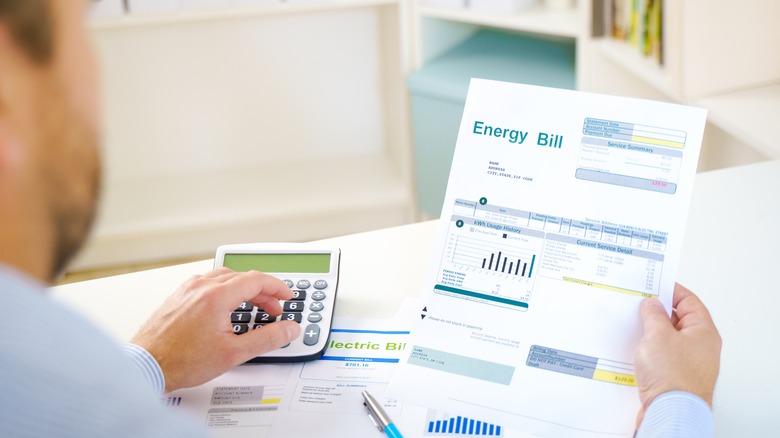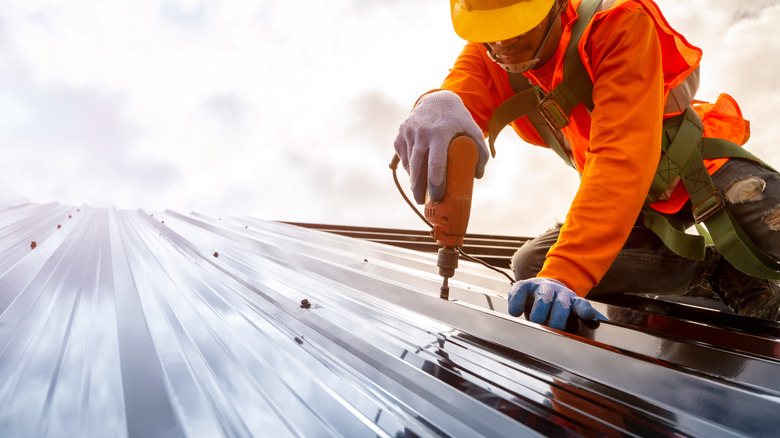5 Myths About Metal Roofing You Need To Stop Believing
Metal roofing has gained quite a reputation throughout the years. Many believe it's loud, prone to damage, or just plain ugly, evoking images of industrial buildings or dirty barns. thankfully, times have changed, and so have options for metal roofs. Metal is a great choice for upgrading your existing roofing, and it can even bring some unexpected benefits and style to your home.
According to the Metal Roofing Alliance, there are four main options for metal roofs: shingle, tiles, shake, and vertical panels. These choices allow you to customize your home's look while still reaping the benefits of this versatile material. If you're not a fan of the minimalistic grooved sheets commonly associated with these roofs, some even mimic the look of traditional shingles or wood to leave you with a durable, but classic look. Continue reading to learn more about the popular myths behind metal roofing, where they came from, and why many are simply not true.
Metal roofing is heavy
It's easy to understand where this myth came from. Metal is heavy, but if you've ever used aluminum foil, you know it all depends on its thickness. The metal used for roofing typically comes in relatively thin sheets, and is actually one of the lightest options available to protect your home. According to American Metal Roofs of Northern Wisconsin, typical asphalt shingles weigh about 2 pounds per square foot. Steel only comes in at 1.5 pounds per square foot, while lighter options, like aluminum, only weigh about 0.7 pounds.
This relatively low weight can help prevent cracking and stress on your home, but it can also present you with a helpful option for a quick repair. If you're looking to upgrade your roof but you don't want to incur the cost of a full replacement, metal panels can be installed on top of your existing shingles to create a new look on a budget.
Metal roofs rust
This myth makes a lot of sense. Large sheets of metal exposed to the elements 24/7 are sure to rust, right? Yes, but with the right maintenance and protection, that shouldn't be a major issue. The metal used for roofing is built to withstand water and scratches for long periods of time. After all, that's the whole purpose of a roof.
According to Straight Line Roofing & Construction, metal panels are typically coated with zinc in a process called galvanization. This prevents oxidation and provides a protective barrier against scratches and corrosion. A zinc coating can protect your roof without maintenance for years to come, but if you're noticing any signs of damage down the line, it's easy to apply a fresh coat of paint. Just make sure to choose a primer high in zinc, and your metal roof will stay good as new despite any rain, hail, and high temperatures it might face throughout the years.
Metal roofing is hot
If you've ever made the mistake of sitting on a metal bench in the summer, you know how hot metal can get. It's a common belief that because of this, metal roofs can trap heat and leave your home hotter, causing your energy bill to spike as the weather gets warmer. Surprisingly, the opposite might actually be true.
Metal is reflective, so instead of absorbing the sun's rays, it can help them bounce off your home and keep your interiors cooler. According to Metal Roofing Alliance, choosing this material for your home can reduce energy costs by up to 40% in the summer and serve as a powerful layer of insulation in the winter, saving you money year-round. If you're looking to go a step further, solar panels can also be easily installed on top of the metal surface and some high-shine finishes can qualify you for energy reduction tax incentives if they're Energy Star certified.
Metal roofing is expensive
Just like any project, the cost of installing a metal roof will vary depending on the size of your home, your location, and the specific materials you choose. This myth, however, does carry a shred of truth. According to Modernize, metal roofing is more than likely going to cost more than installing traditional asphalt shingles, but if you're able to make the initial investment, you can save yourself money down the line.
Metal roofs are built to last anywhere from 50 to 80 years and don't require frequent repairs, meaning your maintenance costs are likely going to be much lower than with asphalt, which only lasts 10 to 30 years on average. Opting for metal also carries the additional benefit of energy efficiency, and many buyers are willing to pay more for a metal roof if you're looking to sell your home. While metal roofs may be a more expensive option at the time of installation, they can pay themselves off over time.
Metal attracts lightning
This myth is logical. We're always taught to avoid metal and tall trees when faced with a lightning storm, and putting a large sheet of metal directly above your head seems like a recipe for disaster. Despite this popular belief, a metal roof isn't any more likely to get hit by lightning than any other material, and can actually help protect against a house fire if lightning were to strike your home, explains Decra. Metal is non-combustible unlike asphalt and wood, and if lightning travels through it on the way to the ground, it is significantly less likely to catch fire than other materials.
Metal roofing has developed its reputation because of the material's common associations, but it's actually a great alternative to other kinds of roofs. It's durable, great for protection, energy efficient, and comes in a variety of options to allow you to customize your home's appearance based on your personal style.
